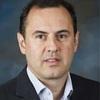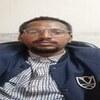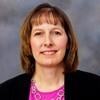Check out what is new in Dairy Cattle
Find the best technical articles, forums, and videos on Dairy Cattle at Engormix. Enter now and interact with the world's largest agricultural social network.
Lecture given as part of bpt (German National Veterinarians Association) meeting 2024, held as part Euro Tier exhibition, Hannover, Germany. Israel is a small country located in the eastern basin of the Mediterranean Sea. The territory of Israel is 22 thousand square kilometers (Germany is 16 times larger than Israel). Almost two thirds of Israel’s territory is desert and only 20% of it is used for agriculture. Israel population is approximately...
Comments : 1
Recommendations: 1
.jpg&w=3840&q=75)
Dr. José Santos (University of Florida) showed the results of some experimental designs using choline in dairy cows, during the conference titled "Choline: A Required Nutrient (Part III)." This content is brought to you by Balchem...
Comments : 0
Recommendations: 0
Our objective was to evaluate changes in choline metabolism including bacterial degradation to trimethylamine (TMA), methyl group transfer, and bioavailability in pregnant and lactating cows. Six multiparous, rumen-cannulated Holstein cows were enrolled in a study design where they were abomasally infused 18 g/d choline chloride (CC; dissolved in water; 170 mL/h) for a 5-d experimental period at −3 wk from expected due date and again at 2 wk postpartum. The stable-isotope...
Comments : 0
Recommendations: 0
.jpg&w=3840&q=75)
Dr. José Santos (University of Florida) gives his conclusions of the conference "Choline: A Required Nutrient (Part IV)." This content is brought to you by Balchem...
Comments : 0
Recommendations: 3
.jpg&w=3840&q=75)

Turn Up the Dial on Rumen Efficiency with NitroShure™ Precision Release Nitrogen
Suggested link
A technique has been established to determine the TMR stability of rumen-protected (RP)-lysine products, but the TMR stability of RPcholine (RPC) products has not yet been explored. The objective of this experiment was to evaluate the TMR stability of 5 RPC products using a modified technique. Triplicate Ziploc bags containing RPC (equivalent of 1 g of choline chloride [CC]), no RPC (negative control), or unprotected CC (positive control; 1 g of CC) mixed with 200 g of TMR (38% DM) were...
Comments : 0
Recommendations: 0
The TMR stability of rumen-protected lysine (RPL) products has been previously investigated, albeit without a positive control, potentially introducing bias. The objective of this experiment was to evaluate the TMR stability of 6 RPL products using a modified technique that used an unprotected Lys treatment as a positive control. Triplicate Ziploc bags containing RPL (equivalent of 1 g of Lys), no RPL (negative control) or unprotected Lys-HCl (positive control; 1 g of Lys) mixed with 200 g...
Comments : 0
Recommendations: 1
.jpg&w=3840&q=75)
Dr. José Santos from the University of Florida discusses the essential role of choline in dairy nutrition during the conference titled "Choline: A Required Nutrient (Part II)." This content is brought to you by Balchem...
Comments : 1
Recommendations: 3
.jpg&w=3840&q=75)
Dr. José Santos (University of Florida) summarizes the history of choline, during the conference titled "Choline: A Required Nutrient (Part I)." This content is brought to you by Balchem...
Comments : 0
Recommendations: 0
1. Introduction Both L-glutamate (Glu) and L-glutamine (Gln) are abundant amino acids (AAs) in plant, microbial, and animal proteins [1]. In the whole bodies of sheep and cattle, Glu and Gln are the third and eighth most abundant AAs, respectively. For comparison, the total content of these two AAs, along with other AAs, in feeds [e.g., Bermuda grass, distillers dried grains, and solubles (DDGS)], ruminal microbes, and skeletal muscle proteins is also relatively high, as summarized...
Comments : 1
Recommendations: 0
Cooling the cows through a combination of wetting and forced ventilation is the most common method in the world today. I estimate that more than 80% of the cows that are currently cooled in the world are cooled by this method. Today we know very well what is required to cool the cows properly, in terms of the "wetting quality", air speed and the time required for cooling during the day and throughout the year. In this article, I would like to describe how was developed the knowledge on...
Comments : 0
Recommendations: 4
.jpg&w=3840&q=75)

Turn Up the Dial on Rumen Efficiency with NitroShure™ Precision Release Nitrogen
Suggested link
1. Introduction Increased atmospheric emissions of greenhouse gases (GHGs), such as nitrous oxide (N 2 O), carbon dioxide (CO 2 ), and methane (CH 4 ), are the primary cause of climate change. These emissions result in unpredictable and erratic rainfall, floods, and droughts [1]. In 2020, agriculture contributed 5865.47 MtCO 2 e, representing 12.34% of its total emissions (47,513.15 MtCO 2 e), including land-use change and forestry...
Comments : 0
Recommendations: 0
.jpg&w=3840&q=75)
This new science changes everything we thought we knew about choline’s impact on the cow and her calf. ReaShure® Precision Release Choline is the original and most researched rumen-protected choline source, so you can be sure you’re getting the benefits you expect. ...
Comments : 1
Recommendations: 0
Ottawa, ONTARIO — What impact will global changes have on Canada’s feed industry? How can local solutions help the sector thrive? How can the feed industry address animal nutrition and feed security to build the sector of tomorrow?
Answers to these questions will be at the...
Comments : 0
Recommendations: 0
.jpg&w=3840&q=75)
radley "Scott" Sorrell, Director of Global Marketing at Balchem Corporation, explores the importance of choline for animal health and the significant impact of Balchem's research in this area. Learn how Balchem's dedication to advancing choline supplementation has positively influenced animal health and productivity, revolutionizing the agricultural industry's approach to nutrition and welfare....
Comments : 0
Recommendations: 0
.jpg&w=3840&q=75)
Dr. Dirk Hoehler, SVP Essential Nutrition at Evonik, provides more details on Evonik’s backward integration of their DL-Methionine plant and their global methionine production network...
Comments : 0
Recommendations: 3
Monitoring and transmitting in real time and continuous manner the body temperature of the cows has become a reality these days. This can improve the effectiveness of cooling treatments given to the cows, with all the benefits that can arise from that. The following article presents the knowledge and experiences accumulated in the last years in Israel, based on monitoring cow's body temperatures, using intravaginal data loggers. In one of my first cooling projects, carried out on a...
Comments : 2
Recommendations: 0
.jpg&w=3840&q=75)

Turn Up the Dial on Rumen Efficiency with NitroShure™ Precision Release Nitrogen
Suggested link
.jpg&w=3840&q=75)
Bradley "Scott" Sorrell, Director of Global Marketing at Balchem Corporation, points out how this podcast stands out from others by offering insightful discussions and deep dives into the latest advancements in the dairy industry...
Comments : 0
Recommendations: 0
.jpg&w=3840&q=75)
Netherlands Farm Finds Success with NitroShure™. After introducing NitroShure the farm improved fiber digestion, more adequate amounts of fast energy, optimal energy and nitrogen efficiency in the rumen, savings on out-of-pocket feed costs, and better protein utilization...
Comments : 0
Recommendations: 1
Global warming and the constant increase in cow yields aggravate the summer problem on dairy farms and increase the production losses caused to dairy producers. An important part of the losses caused is due to the negative effect of heat load on the fertility of cows that are inseminated in summer. To characterize this effect, we collected data from five large-scale, high-yield dairy farms (1,500 to 3,000 dairy cows per herd) located in the "Laguna" region of northern Mexico, characterized...
Comments : 2
Recommendations: 0


















